Imagine stepping into your backyard and being greeted by a vibrant tapestry of colors, all of which you can eat. Edible flowers are not only a feast for the eyes but also a delightful addition to your culinary adventures, transforming everyday dishes into gourmet experiences. Growing these blossoms in your own garden bridges the gap between beauty and utility, offering a unique way to connect with nature while enhancing your meals.
For both novices and seasoned gardeners, cultivating edible flowers opens up a world of exploration and creativity. This practice isn’t just about planting seeds—it’s about cultivating a garden that nourishes the body and soul. In this guide, you’ll discover which flowers are safe and scrumptious to eat, how to care for them, and innovative ways to incorporate them into your cooking.
Embarking on this floral journey, you’ll learn about the perfect conditions needed for these edible wonders to thrive. We’ll discuss planting techniques, ideal soil compositions, and the best times to sow your seeds to ensure a bountiful and beautiful harvest. Whether you’re seeking to impress dinner guests or simply add a splash of color to your plate, growing edible flowers is a rewarding endeavor that promises both aesthetic and gastronomic satisfaction.
Choosing Edible Flower Varieties
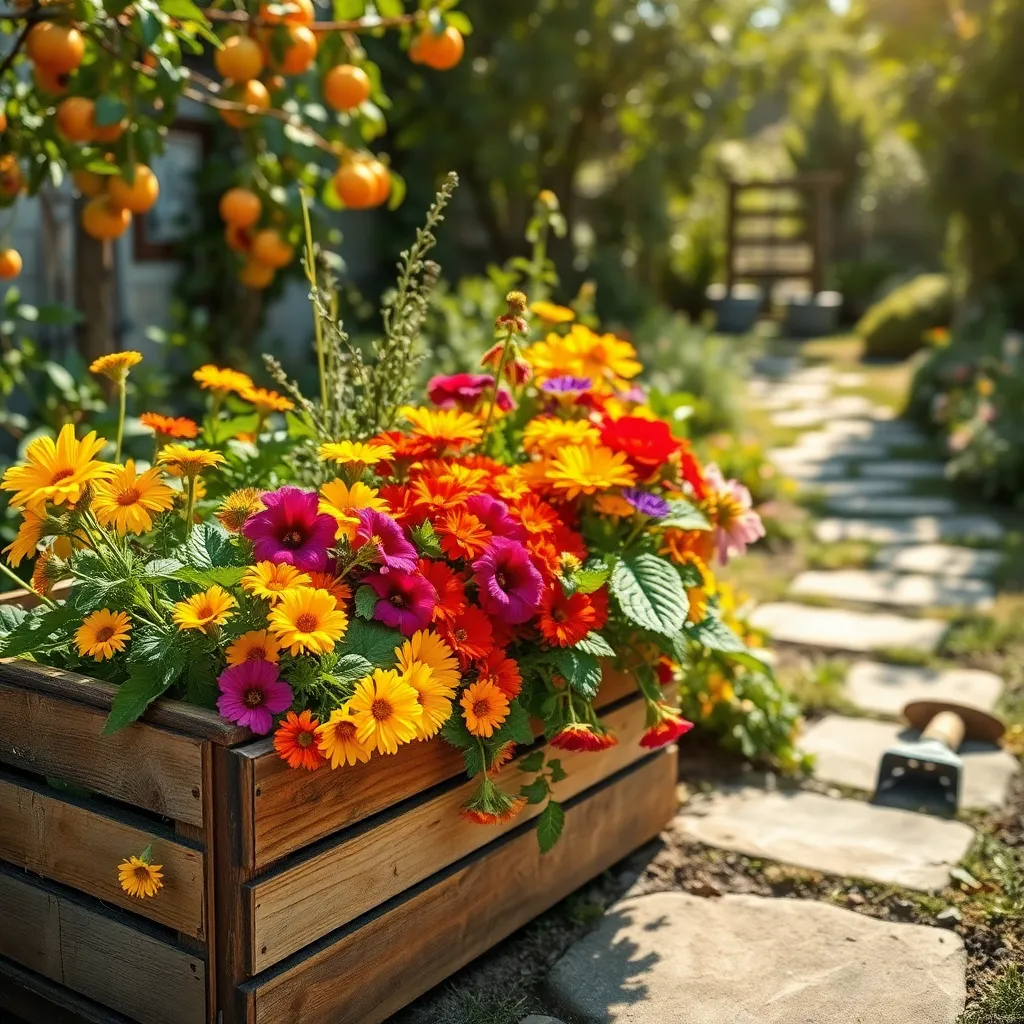
Choosing the right edible flower varieties for your backyard is a delightful venture that can enhance both your garden and culinary experiences. Begin with easy-to-grow varieties like nasturtiums and violas, which are perfect for beginners due to their low maintenance and vibrant colors.
Consider your local climate and soil conditions when selecting edible flowers. For example, marigolds thrive in warmer climates and well-drained soil, making them an excellent choice for sunny garden spots.
Advanced gardeners might explore more exotic options like borage or calendula. These flowers not only add visual appeal but also offer unique flavors that can elevate your dishes with a touch of sophistication.
When planting, ensure you use organic soil and avoid chemical pesticides to maintain the edibility of your flowers. Regularly watering your plants, but ensuring good drainage, helps prevent root rot and keeps your flowers healthy and vibrant.
Preparing Your Garden Bed
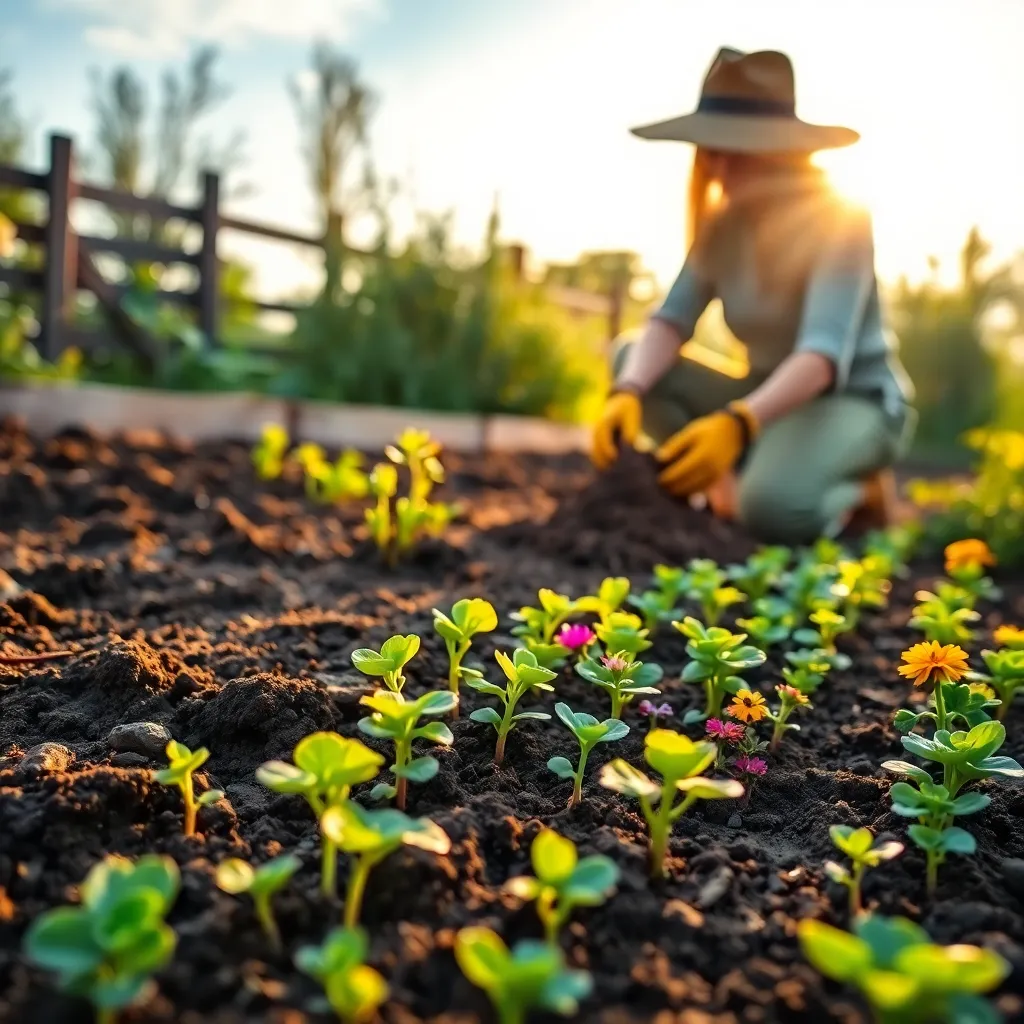
Before you start planting edible flowers, it’s essential to prepare your garden bed properly. Choose a location that receives at least six hours of sunlight per day, as most edible flowers thrive in sunny conditions.
Begin by clearing the area of weeds and debris to ensure your plants have a clean slate. This step is crucial because weeds can compete with your flowers for nutrients and water, potentially stunting their growth.
Next, assess the soil’s quality to determine if amendments are needed. Edible flowers generally prefer a well-draining soil rich in organic matter, so consider adding compost or aged manure to improve soil fertility.
For those with clay or sandy soil, incorporating organic matter can enhance drainage and nutrient retention. Use a garden fork or tiller to mix the amendments into the top 12 inches of soil, creating an optimal growing environment.
Water the prepared bed thoroughly to settle the soil before planting. This step helps eliminate air pockets that can dry out roots and ensures your flowers have a moist start.
Consider creating raised beds if your garden soil is poor or drainage is an issue. Raised beds offer excellent control over soil quality and drainage, which can be particularly beneficial for growing healthy edible flowers.
- Tip: Test the soil pH to match it with the specific needs of the edible flowers you plan to grow.
- Tip: Mulch around your plants to retain moisture and prevent weeds.
- Tip: Rotate your crops each year to prevent soil-borne diseases and nutrient depletion.
Planting and Seedling Care
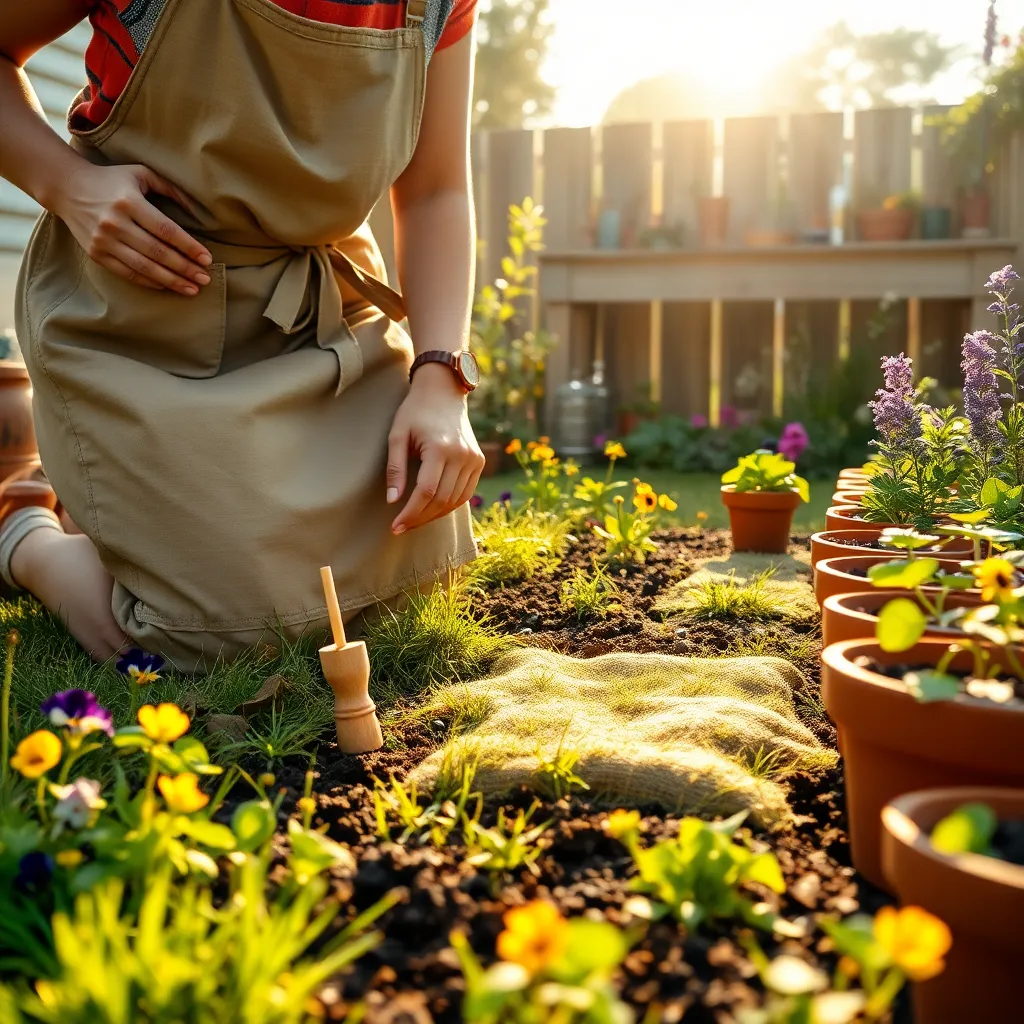
When planting edible flower seeds, begin by choosing a location with well-draining soil and ample sunlight. Most edible flowers thrive in full sun, receiving at least six hours of sunlight daily, which promotes vibrant blooms.
Prepare your soil by mixing in organic matter such as compost or well-rotted manure to enhance its fertility. This not only improves soil structure but also provides essential nutrients your plants need for healthy growth.
For beginners, consider starting your seeds indoors about six to eight weeks before the last frost date. Use seed trays or small pots filled with a light, seed-starting mix to encourage strong root development.
Once your seedlings have at least two sets of true leaves, they are ready to be hardened off before transplanting outdoors. Gradually expose them to outdoor conditions over a week, starting with a few hours in a sheltered spot.
Water your newly planted seedlings thoroughly and mulch around them to retain moisture and suppress weeds. Edible flowers typically require consistent moisture, so aim to water them deeply once a week, adjusting for rainfall.
For more experienced gardeners, consider succession planting to ensure a continuous harvest throughout the growing season. This involves sowing seeds every two to three weeks, allowing you to enjoy fresh blooms continuously.
Remember to check your plants regularly for signs of pests or disease, addressing issues promptly to prevent spread. Companion planting with herbs like basil or mint can naturally deter pests and enhance your flowers’ growth.
Harvesting Edible Blooms Safely
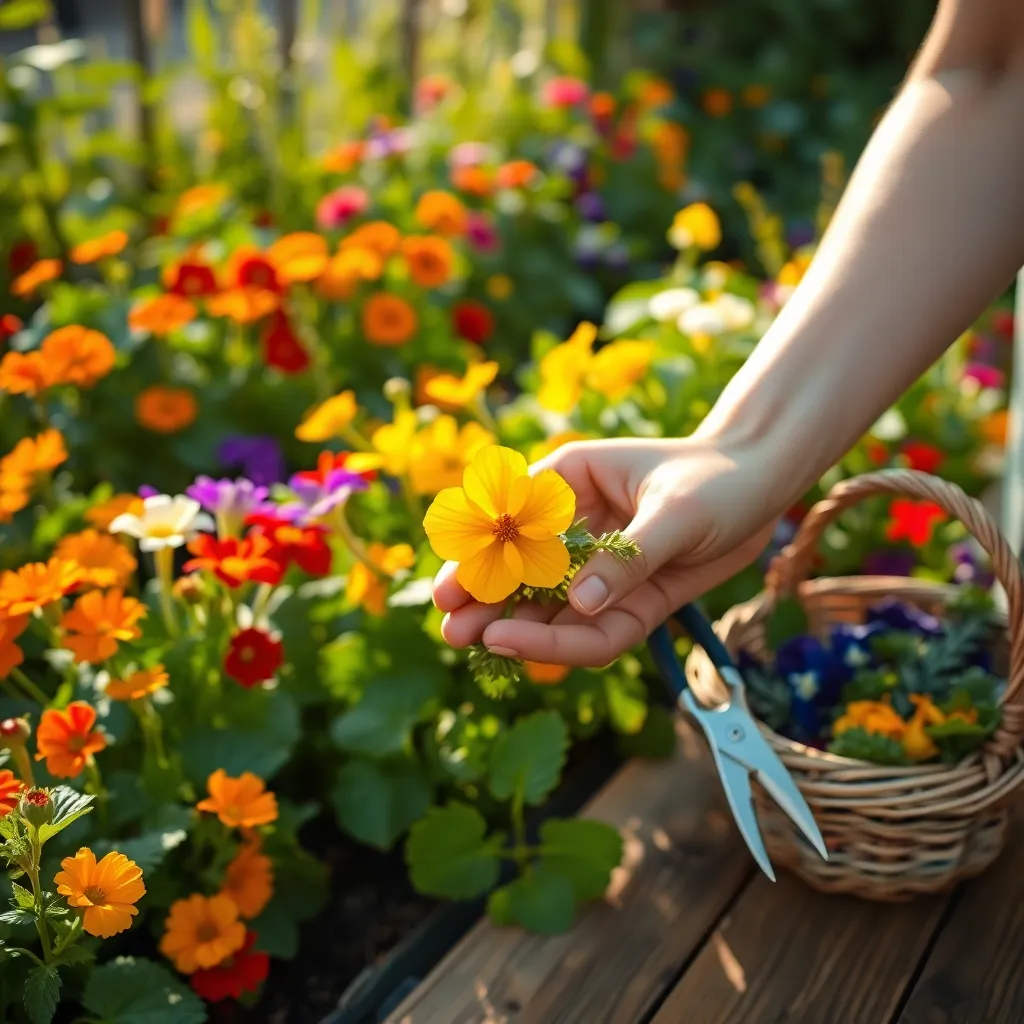
When harvesting edible flowers, it’s essential to pick them at the right time of day. The best time is early in the morning after the dew has dried but before the sun’s heat diminishes their flavor and fragrance.
Always ensure you are picking flowers that are safe to eat and haven’t been treated with chemicals. Use organic methods to care for your plants, as pesticides and herbicides can make blooms unsafe for consumption.
It’s crucial to know which parts of the plant are edible and which are not. For example, with nasturtiums, both the flowers and leaves are edible, while in other species, only the petals are safe.
Once harvested, gently rinse flowers in cold water to remove any dirt or insects. Pat them dry with a paper towel and store them in a sealed container in the refrigerator to maintain their freshness until use.
For advanced gardeners, consider experimenting with different varieties to find unique flavors and colors for your dishes. Calendula and borage offer delightful additions to salads and desserts, while violets provide a sweet, floral note.
Incorporating Flowers into Recipes
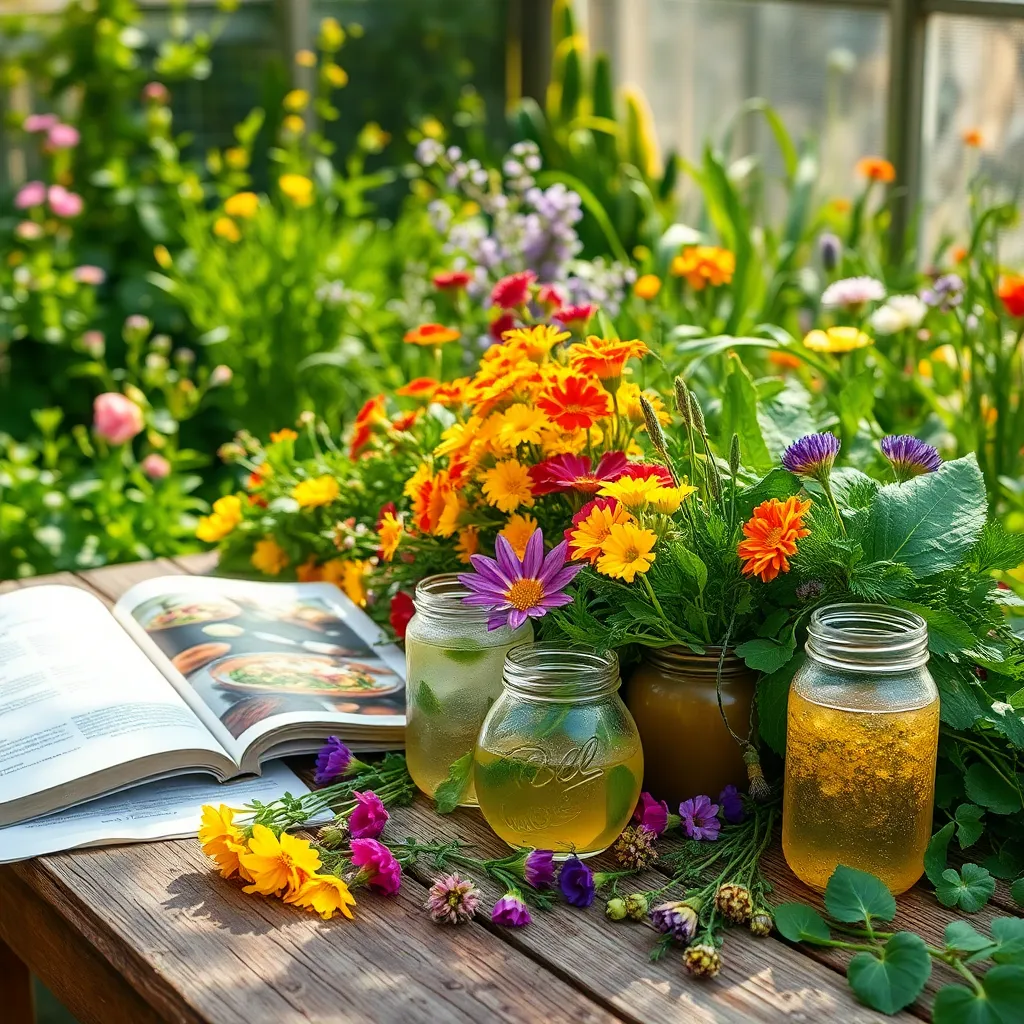
Incorporating edible flowers into your recipes can transform a dish from ordinary to extraordinary. Begin by selecting blooms that are both safe to eat and suited to your climate, such as nasturtiums, lavender, or pansies.
Before adding flowers to your dishes, ensure they are grown organically without pesticides. This is essential as harmful chemicals can be absorbed by the blooms and affect the safety of your culinary creations.
To prepare flowers for cooking, gently rinse them in cold water and pat dry with a paper towel. Removing the stamens and pistils is also recommended, as they can impart a bitter flavor.
For beginners, a simple way to start using flowers in recipes is to add them to salads or desserts. Nasturtiums, with their peppery taste, work well in salads, while violets can add a sweet note to desserts.
Experienced gardeners can experiment by infusing flowers into syrups or oils for more complex flavors. Lavender, for instance, can be used to infuse syrup, which pairs beautifully with lemonade or cocktails.
When growing edible flowers, provide them with well-draining soil enriched with organic matter. Regular watering is vital, keeping the soil consistently moist but not waterlogged, to ensure healthy blooms suitable for culinary use.
Remember to harvest flowers in the morning when they are at their freshest and most flavorful. This practice not only enhances taste but also ensures you get the most vibrant blooms for your dishes.
Conclusion: Growing Success with These Plants
In nurturing both gardens and relationships, we explored five key concepts: the importance of patience, the value of diverse growth, the necessity of regular care, the beauty of shared experiences, and the rewarding nature of harvesting what you nurture. Just as you carefully tend to edible flowers, these principles can help your relationships flourish. Today, take a moment to apply these lessons by planning a small gardening project with your loved ones or simply engaging in a heartfelt conversation to cultivate connection.
As you embark on this journey, remember that growth takes time and effort, but the results are truly rewarding. Bookmark this article as your guide to nurturing relationships, ensuring you can revisit these insights whenever you need a gentle reminder or fresh inspiration.
Looking ahead, imagine the strength and beauty of the bonds you can cultivate by consistently applying these principles. Let this be the start of a flourishing garden of relationships in your life, where love and care blossom abundantly. Your proactive steps today will lay the foundation for lasting connection and joy. Take action now, and watch your relationships thrive.

